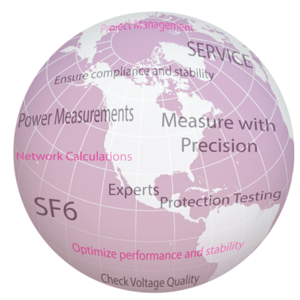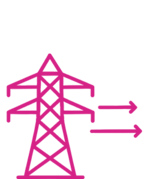
Planning and operation of industrial networks are becoming more challenging due to the increased use of power electronics, highly complex automation systems, and dependence on islanding. Faced with these challenges while ensuring continuity of production, power quality, and personnel protection, careful modeling and analysis of industrial electrical networks is paramount.
The network analysis offers the possibility to calculate and investigate the existing industrial network under different network configurations such as network topology, generation and load condition. Among other things, cable dimensioning, a cable load capacity calculation or an investigation of the protection functions can be carried out here.
Cable dimensioning can be carried out according to applicable norms and standards such as IEC 60364-5-52, BS 7671 or VDE 0100-520. This involves checking the global and individual thermal load limits and the short-circuit load of the cables. Cable dimensioning naturally also includes checking the user-defined permitted voltage drop per terminal strip and/or feeder.
Evaluation of the maximum allowable current carrying capacity of the cable based on information about cable material, cable routing as well as environmental data, including the presence of external heat sources. Convenient modeling of the cable layout, including the installation type of single and multi-conductor cables is possible.
An extensive manufacturer-specific relay library can be used in steady-state and dynamic simulations. Typical protection functions in industrial networks are supported, including overcurrent protection, differential protection, directional protection, overvoltage and undervoltage protection, overfrequency and underfrequency protection. Graphical representation of protection device characteristics such as overcurrent-time diagrams is possible. The determined protection parameters can be output to tables and exported for further review. Step-by-step execution of short-circuit calculations allows easy fault investigation and examination of relay behavior.
Within the scope of a power interruption analysis, a risk assessment for power interruptions of critical installations is carried out. This includes looking at faults in lines or cables, transformers, busbars, in protection devices or circuit breakers. The tracing of individual failures is also possible within the scope of the power interruption analysis.

If you have any questions, please do not hesitate to contact us by phone +49 (0) 5631 95960 or by e-mail to engineering(at)kocos.com.

Transmission grids are undergoing a major transformation. While maintaining their efficiency, they must accommodate an ever-increasing share of volatile and non-regulatable power generation. At the same time, minimizing transmission system costs is required.

The more than 30 years of experience of the KoCoS engineering team and the “PowerFactory” grid calculation program from DIgSILENT provide a good basis for successful grid calculations. Based on load flow and short-circuit calculations, questions about voltage drop, protection functions and selectivity can be answered reliably.

Challenges such as reverse power flow and voltage rise due to distributed generation as well as the integration of electromobility have led to a significantly higher effort in the planning and operation of distribution grids. Sophisticated and comprehensive grid optimization tools are required to perform the associated studies.